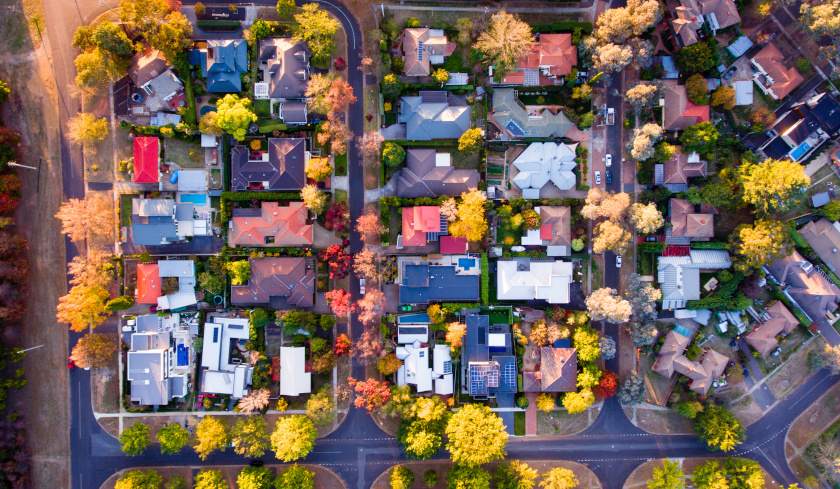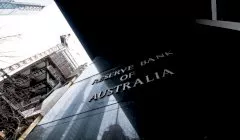Invest
10 years on: which properties doubled their purchase price, and which didn’t?
Invest
10 years on: which properties doubled their purchase price, and which didn’t?
The latest Property Pulse from CoreLogic shows the areas where the value of their purchase price doubled, which fell by 10 per cent, and what that means in the long run.
10 years on: which properties doubled their purchase price, and which didn’t?
The latest Property Pulse from CoreLogic shows the areas where the value of their purchase price doubled, which fell by 10 per cent, and what that means in the long run.

Tim Lawless, CoreLogic’s head of research, said strong capital gains in Sydney and Melbourne over the last 10 years “have created a significant boost in wealth for home owners who were fortunate enough to own a property through the latest growth cycles”.
Properties that haven’t been so successful and have seen a fall in value of their purchase price, however, are especially evident in areas that heavily rely on the mining sector.
The overall proportion of dwellings where property value is at least double its purchase price, according to CoreLogic data, has fallen to 39.1 per cent, down from 45.4 per cent last year.
The highest benefactor of properties worth double their purchase price are those in Sydney with 48.1 per cent of all dwellings, up from 37.2 per cent in 2007, followed by Melbourne at 47.3 per cent, up from 38.1 per cent in 2007.

Meanwhile, the area with the highest proportion of properties worth 10 per cent less than their purchase price after 10 years is regional Western Australia at 17 per cent.
This is a stark difference to 10 years ago in the early stages of the mining boom, where only 2.3 per cent of dwellings were worth 10 per cent less than their purchase price.
Suburbs which have seen the largest proportions of falling values over the last 10 years include Queensland’s Dysart and Gladstone Central at 65.7 per cent and 64.2 per cent respectively, then Western Australia’s South Hedland at 64 per cent.
However, it is not all happy days for Sydney and Melbourne and doom and gloom for these once thriving mining areas, as Mr Lawless has said that conditions are pointing to the end of their cycle.
“As growth eases across Sydney and, to a lesser extent Melbourne, we may start to see a slow reversal of these trends,” he says.
“It will be harder to double the value of a property in Sydney and Melbourne after such a sustained period of high capital gains, however markets such as Hobart and Canberra, which have gathered some momentum, are likely to see home owners benefit from improved capital gains that is likely to boost their overall wealth profile.
“Similarly, the worst appears to have passed across the mining sector … [as] transaction numbers are generally rising and advertised stock levels are reducing which should help to promote some value recovery in these regions … although it is likely to take many years before property values recover to their previous highs in many of these regions.”

Property
Retirement communities: a pivotal element in meeting Australia's housing targets
The Retirement Living Council (RLC) has recommended that retirement communities should be considered a vital part in the Australian Government's initiative to fulfill the Housing Australia Future Fund ...Read more

Property
Australians adjust financial strategies amid changing property market dynamics
The 2023 calendar year saw Australian borrowers acquiring a total of $300.9 billion in new loans for property purchases, marking a 12.7% decrease from the previous year. Read more

Property
Split home loans unlocking doors for Aussie buyers
Australians are teaming up to dive into the real estate market and seize the advantages of home ownership, with the trend of split home loans surging as family and friends unite to buy properties ...Read more

Property
Real estate investment: Spotting high-growth potentials
Investing in real estate has long been a favoured approach for Australians looking to grow their wealth. Read more

Property
Granny flats become Aussie families' cost-effective solution to soaring living costs
As the cost of living skyrockets, a forward-thinking trend is sweeping across Australia – granny flats are becoming a favoured living arrangement for older Aussies seeking comfort and proximity to ...Read more

Property
Homebuyers grapple with extended savings period amid affordability crisis
Gone are the days when an Australian dream home seemed just within reach. The path to homeownership in Australia has extended by at least two arduous years, as revealed by the latest insights from ...Read more

Property
Hybrid development unlocks new potential for NDIS housing in metro hotspots
In a ground-breaking strategy aimed at addressing the stark imbalance between the location of Specialist Disability Accommodation (SDA) developments and the actual areas of demand, Aligned Disability ...Read more

Property
Property prices boosted by housing policies: RBA
The central bank has outlined the “pervasive” impact that policy has on property. Read more

Property
Retirement communities: a pivotal element in meeting Australia's housing targets
The Retirement Living Council (RLC) has recommended that retirement communities should be considered a vital part in the Australian Government's initiative to fulfill the Housing Australia Future Fund ...Read more

Property
Australians adjust financial strategies amid changing property market dynamics
The 2023 calendar year saw Australian borrowers acquiring a total of $300.9 billion in new loans for property purchases, marking a 12.7% decrease from the previous year. Read more

Property
Split home loans unlocking doors for Aussie buyers
Australians are teaming up to dive into the real estate market and seize the advantages of home ownership, with the trend of split home loans surging as family and friends unite to buy properties ...Read more

Property
Real estate investment: Spotting high-growth potentials
Investing in real estate has long been a favoured approach for Australians looking to grow their wealth. Read more

Property
Granny flats become Aussie families' cost-effective solution to soaring living costs
As the cost of living skyrockets, a forward-thinking trend is sweeping across Australia – granny flats are becoming a favoured living arrangement for older Aussies seeking comfort and proximity to ...Read more

Property
Homebuyers grapple with extended savings period amid affordability crisis
Gone are the days when an Australian dream home seemed just within reach. The path to homeownership in Australia has extended by at least two arduous years, as revealed by the latest insights from ...Read more

Property
Hybrid development unlocks new potential for NDIS housing in metro hotspots
In a ground-breaking strategy aimed at addressing the stark imbalance between the location of Specialist Disability Accommodation (SDA) developments and the actual areas of demand, Aligned Disability ...Read more

Property
Property prices boosted by housing policies: RBA
The central bank has outlined the “pervasive” impact that policy has on property. Read more






